#Eye Zen
Text
Out of the Bars, Into the Streets: An Interview By Eye Zen Presents
For our second post in our Deep Dive series, director Seth Eisen and I (Jax Blaska, research & production assistant) sat down to talk about the rise of gay bar culture in the early 1960s and how that contributed to the burgeoning gay liberation movement. The transcript of our conversation is below, along with links for further reading and historical context for certain happenings. Italicized segments below are pop-out context/deeper info on the topics we touched on. Enjoy!
Jax Blaska: What feels most important to you, when we think about (gay) bar culture in this time? How was this a shift from what came before?
Seth Eisen: The first thing that comes to my mind is the words: Safe space. And the other thing that comes to my mind is Romeo’s Pizzeria.
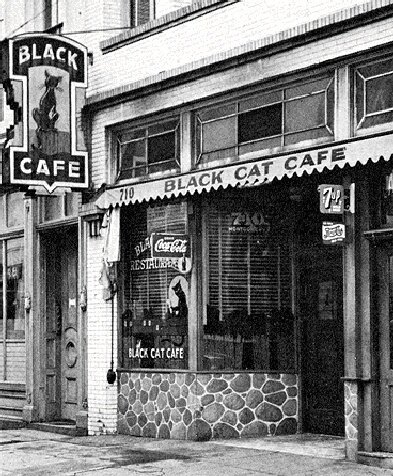
Image courtesy of https://www.foundsf.org/index.php?title=The_Black_Cat_Cafe
Romeo’s Pizzeria stood at 1605 Haight St., where Relic Vintage now lives. From 1964-1965, Romeo’s was the location of drag performer, activist, and eventual candidate for SF supervisor Jose Sarría’s operas. His performances’ typical location, the Black Cat Cafe on Montgomery St. in North Beach, closed that year after its owner had fought long and relentless legal battles in court for over 15 years.
I think it’s really interesting that that marked the transition in a way, because that year was really significant, in that the Black Cat closed after their long legal battle. Sol Stoumen, the proprietor, was a kind of incredible guy, I’m really fascinated by him. He was a Holocaust survivor, and a straight man, but his bar catered to all types of people — the Beats gathered there, older locals from the neighborhood, and of course, the gay crowd. There was so much police harassment going on, all about serving gay people. First of all, you could not be an out gay person as an owner of the bar, because if you’d ever been convicted of a crime against morality — which many people were, for soliciting or performing a lewd (homosexual) act — you were prohibited from running a bar. Women could not serve alcohol, (or even, in some places, legally enter a bar) so there was always a man working the bar. Even at Maud’s, the longest running lesbian bar up in Cole Valley, they had male bartenders, because that was the law. The ABC -- Alcohol Beverage Control board — had lots of control over how all these laws went, and then they were all tied together with Catholic, or Christian, politics and morality of the era, moving from the early 20th century into the mid 20th century. Mr. Stoumen took them to court a number of times, to the California Supreme Court, and he actually eventually won.
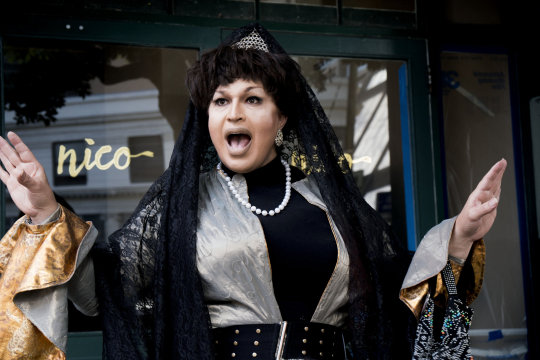
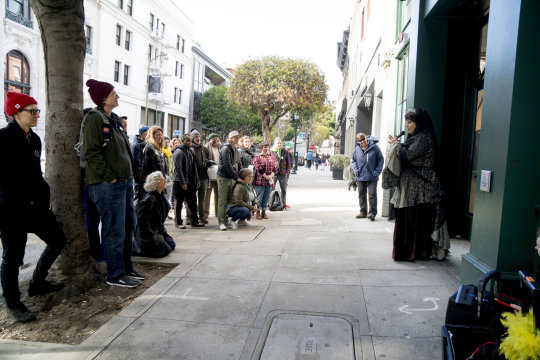
Landa Lakes performing as José Sarria outside Black Cat.OUT of Site.NorthBeach. Images courtesy of Chani Bockwinkle
But anyway, this is just to say, it’s an interesting thing that José’s stint at Romeo’s Pizzeria coincides with the closing of [the Black Cat]. Stoumen is such an important person, I think, in the fight for being able to serve queer people, and for queer people to be able to gather legally in a bar, because that was our safe space. And then there was this whole ring of police harassment and bribery — bribing the cops. So, regularly, a cop would come in, he’d give him the hundred bucks, or whatever it was, for that day, and then they would not bug them. And if not, there’s a whole bunch of arrests, and all that shit. This also brings in the beginnings of SIR, the Society for Individual Rights, and then also the Tavern Guild. They were one of the first gay activist organizations to gather power and the rights of queer bar owners and business managers to not be bugged.
JB: “The right to not be bugged,” I love that. And it’s interesting, because when we talk about queer liberation, and the birth of the more widespread gay liberation movement, often we talk about different uprisings that have happened in different bars. Obviously there’s Stonewall, but even before that, there’s Compton’s Cafeteria, in the Tenderloin. So it is really interesting to me that the bars and restaurants and clubs that served gay people become this rallying site from which to create a larger political movement. It starts as being just about — “just” about — “no, we have the right to gather and drink with our friends,” and then it becomes this larger fight for dignity.
SE: Yeah, the bars, that’s the first level of it. That’s a place where we could gather safety and power, because it wasn’t safe on the streets, being harassed, especially if you were non-binary or genderqueer in some way. And there was just so much blatant homophobia on the streets, and violence, and especially by the cops.
Which is what Stoumen was trying to fight. They basically forced him too close. Even though he went through years of legal battles. And won. But it wasn’t in time to save it. So then, moving forward, these bar owners band together, and José I think was pretty instrumental in developing the Tavern Guild. That was the first gay business association in the country, founded in 1962.
Yeah. Wow. It’s really telling — it’s not surprising, but it’s telling — that the first gay business association in the country is the Tavern Guild. That early solidarity is organized around equal access to bars. And it was based out of San Francisco.
Jose Sarría, nicknamed the Nightingale of Montgomery Street for his operatic performances at the Black Cat, was instrumental in developing the Tavern Guild, initially drawing together gay bar owners (and heterosexual owners of gay bars, like Sol Stoumen) to raise funds to pay for bail money and legal fees, like the ones Stoumen was facing for his long court battles. While it was too late to save the Black Cat, which closed in 1963 after its liquor license was revoked by the ABC and it could not survive by selling only food and soft drinks, the Tavern Guild did go on to become a crucial organizing arm of gay liberation in San Francisco. SIR and the Tavern Guild were closely intertwined allies: SIR would meet at alternating bars whose owners were members of the Tavern Guild, drawing business on typically slow nights, and Tavern Guild members would donate food and drink to SIR for its parties.

Image courtesy of https://www.foundsf.org/index.php?title=The_Black_Cat_Cafe

Image courtesy of https://revolution.berkeley.edu/tavern-guilds-beaux-arts-ball/ via the Berkeley Tribe
The most major event that the Tavern Guild would sponsor was an enormous Halloween drag ball, the first of its scale in the Bay Area, first held in 1963 at the Jumpin’ Frog on Polk St. At the third annual of these Beaux Arts Balls in 1965, Jose Sarría was named Queen. Declaring that he was already, had always been, a Queen, he then named himself Empress, and the Imperial Court system was born.
One really interesting thing is that at a certain point, after all this police brutality that was happening with the bars — I’m really fascinated by this straight police officer who the commisioner assigned to the gay community, and this was a real turning point.
Wow.
Yeah. So the history is pretty massive: there was a New Year’s party that was planned at the California Hall, on Polk St., and it was organized by a bunch of priests, including Reverend Cecil Williams, from Glide Memorial Church, who was a major activist in the scene, and Ted McIlvenna, a minister who later was a key figure in the San Francisco Institute for the Advanced Study of Human Sexuality. They planned this event so that this alliance between religious leaders and the gay community would prevent police from breaking it down, and assert that these people actually had the right to gather, and be there together. And then there was a huge raid, the cops did not do as they had promised, even one of the priests got arrested — anyway, that’s a whole other can of worms, but it’s an important moment because through that event, the failure of that event, came this desire and need for there to be a dialogue between the police department and the queer community. And it was, really interestingly, the priests that were leading this — who were also, you know, getting money from the government to help combat poverty at the time, so they were able to invest more into this.
I’m really fascinated by Elliot Blackstone, the police officer tasked as an intermediary between the gay community and the SF Police Deaprtment. He worked closely with the trans community, too, after a number of folks approached him about the brutality and violence they faced. He was an ally. He was like, “you can’t just go in and start arresting people randomly.” But of course, this is all tied to years and years of this police brutality. In all the neighborhoods that we were in — Polk Street, North Beach, the Haight, the Castro — the raids were just everywhere.
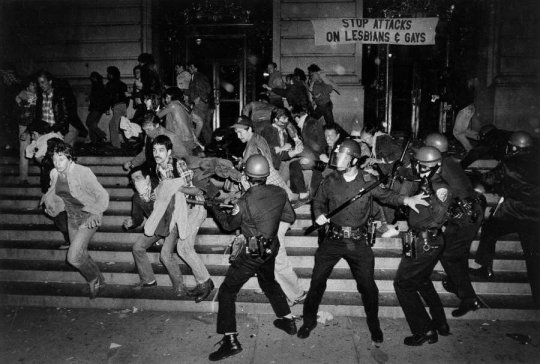
Image courtesy of https://projects.sfchronicle.com/2018/sf-pride-timeline/ via John Storey/The SF Chronicle
So all that stuff is really important to name. So then, once we move forward, going into the seven gay bars in the Haight, we can start to talk about the differences between them and the kind of individuality that was starting to happen. Maybe that was always the case, I don’t know, but like in North Beach, with the very early gay bars, there were always differences — lesbians went to one place, there was one place that was more touristy — but I think there was more nuance happening in terms of individuality in the gay community, and different kinds of queers. For example, we would note the gay hippie bars, the more activist lefty crowd, sometimes those mixed, and then the “clone” crowd.
The Seven Gay Bars of Haight Street:
Gus’s Pub. 1446 Haight St. Gus’s was frequented by motorcycle guys and leathermen. It served only beer and wine, no hard liquor, and its backyard was notorious for potsmoking, political discussions, and gay sex. Eye Zen friend/collaborator and filmmaker behind The Cockettes, David Weissman, told us in an interview that at first it didn’t occur to him that Gus’s was a gay bar because “I had never seen gay people that looked like that before” — that is, not effiminate or flamboyant, but masculine and tough. Lefties and hippies frequented as well. The wallpaper was a collaged collection of obscene comics and photos.
The Question Mark. 1437 Haight St. Now Trax, having changed its name in the early 80s. Directly across the street from Gus’s, The Question Mark brought a slightly higher-class, less politically-radical & leftist crowd. It was decorated with moose heads, and ironically, had a giant framed photo of Gus’s Pub displayed on the wall.
The I-Beam. 1748 Haight St. The I-Beam was the first big gay club in the Haight — filling a crucial niche, because prior to its opening, gay gathering places in the neighborhood were smaller and thus more secretive/private. But the I-Beam was big, and loud, featuring rock and punk bands like Siouxsie and the Banshees, Duran Duran and the Cult, as well as their packed Sunday afternoon Tea Dances, which provided an environment in which gay attendees were the majority. There was a $5 cover charge to get in, to which the hippies were initially opposed, as they felt it was an infiltration of “clone” gays from other parts of the city who were hopping on the bandwagon without being invested in the political and social ideals which gay hippies stood for. Nonetheless, the I-Beam was wildly popular, drawing up to 1000 people a night, and was a huge part of the “gay renaissance” of the Haight in the late 70s and 80s (the I-Beam opened in 1977). Its often drug-fueled dance parties, however, were the target of numerous sound complaints from neighboring businesses hoping to shut down this bastion of gay nightlife. The I-Beam closed in 1992, unable to remain competitive with the South of Market clubs which were permitted to go all night, as well as the devastation of the AIDS epidemic.
Bones. 1840 Haight St. Now, Milk Bar.
Cadillac. 1511 Haight St. A historical gay bar, then reopened as The Deluxe in 1978. Along with I-Beam, the Deluxe was one of the popular spots responsible for the “gay renaissance” of the neighborhood — it was a trendy spot to play pool and cruise.
Mauds. 937 Cole St. Owned by Rikki Streicher, Mauds was a familial gathering spot for San Francisco lesbians for over 20 years, until its close in 1989. Men were welcome — as bartenders, as California law prohibited women from pouring drinks. Streicher hosted holiday dinners for folks who didn't have family or homes to return to. For more, see the film Last Call at Mauds.
Bradley's Corner. 900 Cole St. Bradley’s Corner was a neighborhood piano bar for nearly 40 years, the last 20 of which were distinctly gay. Gays and lesbians gathered together there, along with military personnel from the Presidio — some of whom, no doubt, were included in the first categorization — and folks sang along to the piano and played pool. Around the corner from Mauds, Bradley’s also had a familial vibe: every Tuesday, spaghetti dinners were offered for 69 cents, while Wednesdays were "hat nights": "Wear a hat and pay 50 cents for bar drinks" reads an ad from the time.
Of these, only Trax (formerly The Question Mark) remains as a gay bar today.
So anyway, I think a key theme here is identity, post-Stonewall. Or, let’s just say, during the height of Gay Liberation. Because Stonewall is only one event. I love that — in the book we’ve been passing around [Smash the Church, Smash the State: The Early Years of Gay Liberation, a compilation edited by Tommi Avicolli Mecca] it names three events, pre-Stonewall — if you think about it, there’s Cooper’s Donuts in LA (1959), there was Dewey’s in Philadelphia (1965), Compton’s Cafeteria here in San Francisco, in the Tenderloin (1966), and then of course there’s the Stonewall (1969). And all of them had uprisings. And out of that comes gay liberation. That’s one of the factors. Not tolerating the harassment anymore, and asserting our rights. And so — Gay Liberation Front, the Bay Area Gay Liberation Front, the Society for Individual Rights, the Tavern Guild — all of these organizations are basically playing off each other, and they are the next generation after the Mattachine Society and Daughters of Bilitis. I think that’s important to mention: there’s starting to become this new awareness of what our identity was, that our identity was nuanced, and that there could be different places for different people to be.
Right, and not just — my understanding of Mattachine and Daughters of Bilitis is that they were pretty straight-laced, like, “gay people, they’re just like you,” march in Washington holding signs and wearing suits and dresses. Assimilationist, because there wasn’t really another option. But later, to really be able to assert — you know, Compton’s was primarily Black trans women and drag queens who initially fought back. There was someone, we don’t know who she was, but she throws her coffee in a cop’s face, and that apparently is what starts the uprising. Beginning to assert ourselves as queer people as having lots and lots of nuance and different types of desires and wants for community and liberation. Feels like a really crucial turning point.
Yeah, it is a crucial turning point. So, in the early 60s, our rights are changing, and these different bars are opening, in the Haight. There’s more nuance and more individuality, distinguishing one bar from the next, different versions of “gay” you could be. And out of that a kind of a revolution is happening.
This idea of gathering in community is obviously huge. Cannot be overstated.
Yeah, the gathering. And in terms of gathering, we also have the Golden Cask, which David Weissman [interviewed for the oral histories we gathered] mentioned was a big gay hangout and a very good restaurant, at 1725 Haight, so it was up a little higher, closer to the park. And then there was Blue Front Deli, which is still around, and it was a gay-owned business, and then Mommy Fortuna’s Cafe, which is where the Cockettes hung out. So I think between those places, there was a lot of gay gathering spaces, to be out and be ourselves.
I think this is a great backbone to the story about how gay bars played a role in gay political awareness and liberation. I’m also interested in how these gathering places, combined with the spirit of sexual revolution in the 60s, impacted folks more personally, on an individual level, in their sex and romantic lives.
So should we talk about sex?
Let’s talk about sex. My next question is: what changed for queer people with the sexual revolution of the 60s? What didn’t?
In terms of sexuality, I think when you’re repressed for long enough, living under some other morality system that you don’t subscribe to, that, I would think, would make us want to express ourselves in the most free & open way. To be in private spaces where we could love ourselves; where we could feel both safe and comfortable to be able to express ourselves sexually. “Gay is good” was a slogan José [Sarria] coined — this belief that we could be together in the ways that we wanted to, it wasn’t shameful, and it could be less hidden. As opposed to the ten years before, at these gay and lesbian bars in North Beach, when as soon as a cop walked in, you go and you dance with a person of the opposite sex. There’d be a word, or a code, flickering the light off and on, and there’d be this switching that would happen.
It’s a pretty interesting example of solidarity between the two communities. “Okay, neither of us want to be caught in this situation, so let’s pretend — let’s be beards, while the cops are here.”
Yeah. So I think with those newer freedoms, then you add LSD into it, once the 60s come around, and people are like, slithering around, and just wanting to make love to everything in nature. There’s pot, and mushrooms, and other drugs, to kind of help us get more into our bodies and appreciate what we have, who we are, physically, as social, sexual, spiritual beings.
I love that a lot. I love this idea that in some ways the drugs that became super widespread in the 60s may have helped the culture in general but in particular queer people to feel a part of their bodies. And that was not something to be ashamed of, or to push away, but to really embrace.
Yeah. I mean, of course there’s also the opposite of that happening — rampant alcoholism and addiction, with people holding so much shame and internalized homophobia that it’s turning inwards on ourselves. As seen in movies like Boys in the Band, which was originally a 1960s play. So I think both of these things are happening simultaneously: drugs freeing us, and drugs taking a hold of us. And the different gay groups are going in different directions. Mattachine splinters off, as you were saying earlier, and the assimilationists are going further in that direction, into fitting in, versus Harry Hay and many others who were creating [Radical] Faerie circles, gathering together and seeing us as more whole, healthy, “normal” and unique in our own way.
That’s really interesting, this idea of uniqueness, because I wonder if that’s something that’s shifting for the culture as a whole, and not just within the gay liberation crowd. I wonder if it’s something to do with the 60s, and 70s, the hippie movement, anti-Vietnam war, this desire to not be seen as part of the machine of the nation, and everything it stands for, all of the norms that it upholds. I can just imagine, all of these kids who were born shortly after World War II, and raised in that shadow, beginning to split off, and say, “no, I want to be an individual, it is not the goal to blend in, have a white picket fence and a suburban home that looks identical to my neighbors’.”
Yeah. Even as [Eye Zen contributor, Out of Site interviewee, historian] Michael Sumner pointed out, really acutely, that going back even further, into the first and second World Wars, that San Francisco was a stopping off point, for people at sea, and for military personnel coming through town. A lot of people saw this as a place where they could be singular people. Straight people as well, but there was more opportunity for homosocial spaces. So SROs [Single Resident Occupancies] have long been vital to San Francisco, and they created more of these homosocial spaces, where men could be living all together, in single rooms, because they were itinerant workers, so they’d be going out to sea, wherever they were called to duty. And then, when people were coming back from the war, they were like, “am I gonna go back to this conservative village in Indiana, or am I gonna stay in San Francisco?” So that’s how a lot of people chose to remain here, as they came through here, and they saw the potential for freedom, even though there was still a lot of danger. It goes all the way back to those times, and the connection to military then. And Jose [Sarría] is really part of this generation, he served in the military, he was discharged… Gavin Arthur is another one. He also served in the military. So anyway, that’s a whole other story. But I love how those generations kind of intersect.
[Eye Zen contributor, interviewee, historian and friend] Joey [Cain]’s been talking to me too, about the first Faerie gatherings, the first Sissy Circles — they were really an outgrowth of Gay Liberation Front circles. They were events where political strategizing would happen more casually inside people’s homes, where they would get together and talk about politics. And places like Gus’s were hotbeds for that crowd. And then they were meeting, at Arthur Evans’ place, and there were a bunch of these houses, where people were getting together and going “no, we’re not gonna tolerate this, we’re gonna fight back.”
This connects to Atascadero, which was a mental hospital where gay people would be sent. They were giving lobotomies to gay people, they were doing electric shock treatments, they were doing aversion therapy treatment, where they would hook up nodes to their penis and shock them when they were thinking about gay men, or gay sex, or whatever. These people were tortured, and many never recovered, physically or mentally. Activist Don Jackson wrote an article titled “Dachau for Queers” that ran in the Gay Sunshine Press about his experiences visiting “patients” — inmates — there.
Wow. Oof. That is… strong imagery.
So that’s what we’re pushing up against. We’re seeing that, and we’re going “no.” Cause a lot of people don’t know this, but people have to know that. It’s really important.
Yeah. I mean, I didn’t know that. Or when I think about that [torture], I think about it in rural areas, conversion camps… I don’t think about it in the Bay Area.
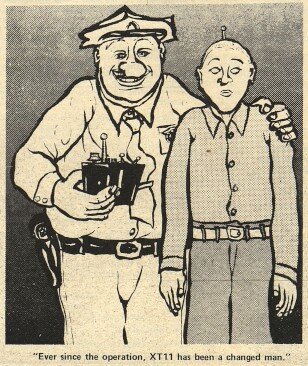
Image courtesy of https://voices.revealdigital.org/?a=d&d=BGJFHJH19730316.1.7&e=-------en-20--1--txt-txIN---------------1 via Los Angeles Free Press, “California runs a ‘Dachau for Queers,’” March 16-26, 1973
Ok, speaking of the Bay Area. What role did nature or public parks play in queer hippie life? Part of what I meant with this question is not just the free sex, cruising spots but also, how did proximity to nature impact the culture and the ways that people related to each other? Because that is something that is unique to San Francisco in terms of other major cities in America.
Well that’s interesting that you bring that up, because Sunday I was feeling obsessed, trying to find more stuff, and I was rereading the interview with Michael [Sumner], and that’s one of the major themes that he got into: that especially the Haight, nature was a really important thing. LSD played a part in that, acid being a drug that puts you in touch with your body and the environment, that you’re in this state of presence. And Michael also mentioned that there was a whole group of radical queers from the GLF who were regularly going to different spots in San Francisco. There are more areas of nature in San Francisco than there are in most urban environments — and also they were going up to Russian River. That was the big hangout spot. And as we moved into the ‘70s and ‘80s, that remained, and still remains, a really important haven for queers. During the AIDS pandemic, a lot of people were going there to die, and thought they were going to die there. It’s so hard to say “they,” because everyone’s story is unique, but I’ve heard many stories of people going there to die, and then the cocktails happened, and they survived, and they are still there. I know a handful of people, who I’ve visited there, people I’ve known over the years. And you know, there are events, and bars there, the whole scene. But yes, I think nature’s really important.
And then there was, of course, sex happening in Golden Gate Park, at the Windmills, down near the beach, which has historically been a well-known gay cruising spot. And then there are all these bathrooms, within the park. There’s one particularly, right near the buffalo, that I’ve heard was a big cruising spot. Cause like, where do you go? You have roommates, they don’t know you’re gay, where do you go to have sex? But Buena Vista Park was really developed. I mean, you can still walk through there, and see the pathways that were created in different places. More on the Eastern side, off the beaten path, you can still see these pathways where you can walk between bushes. It’s all been opened up now, they’ve cut back all the bushes so it would stop — because it was like, a gathering space, there’d be dozens and dozens and dozens of people there, you’d go there to cruise people, you’d bring people there, there was sex happening all over the place. And then there was, you know, Bobby’s Victorian.
Well, we have to talk about Bobby’s Victorian, because as you know, this is one of my favorite details of the entire project.
I mean, he’s a fascinating character, Bobby Kent — he played in Glide’s band, he performed with Sylvester, he was really there in the moment. More connected, it seems, than most, in an interesting and unusual way. Why are you fascinated by him?
For some of the similar reasons you mentioned. Multiple different people have mentioned him, to you, to us, being like, “Oh yeah, he was there. That was him also,” and I’m always fascinated by the types of characters who tend to find themselves amongst different communities. There’s also something about the physical history — the built environment of the neighborhood. The fact that he had this job restoring old Victorians — you know, I grew up in a Victorian house up in the Fillmore, and have a lot of nostalgia for those types of homes, a lot of appreciation for how specific and weird a lot of their quirks are. So the fact that one of his crafts — he was a musician, among other things as well — but one of his crafts was this very loving restoration of these homes, not because it was profitable, back then, but because otherwise they were going to be torn down, and because he thought that they were beautiful, and they shouldn’t be torn down. And then to go and be like, “okay, I’m going to take scraps from these job sites I’m working on and go build a Victorian treehouse in the biggest cruising area in the city, and make it, like, an orgy treehouse — ” I also love that. I wanna know — I mean, the cops burned it down one night? I want to know, were there people there, did they see? Was there a raid on the park in general and then the cops burned it down in protest, or was it kind of in secret, like, toss a lit cigarette in, and then boom? I mean, I don’t know. That’s just — one of the details I’ve latched onto in this project.
Yeah. I love talking about this shit with you, Jax. It’s been really fun.
I feel the same way!
*both laughing*
#Jax Blaska#Seth Eisen#Jose Sarría#Black Cat Cafe#Maud's#Stonewall Inn#Sol Stoumen#Cecil Williams#Ted McIlvenna#Gus’s Pub#Eye Zen#The Question Mark#The I-Beam#The Deluxe#Bradley’s Corner#Trax#Compton’s Cafeteria Riot#Cooper's Donuts Riot#Dewey’s Sit-in#Mattachine Society#Daughters of Bilitis#Gay Liberation Front#Queer#Revolution#Image#Interview#History#Frank Kameny#Boys in the Band movie#Film
2 notes
·
View notes
Text
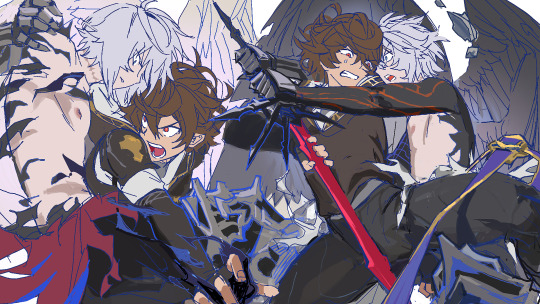
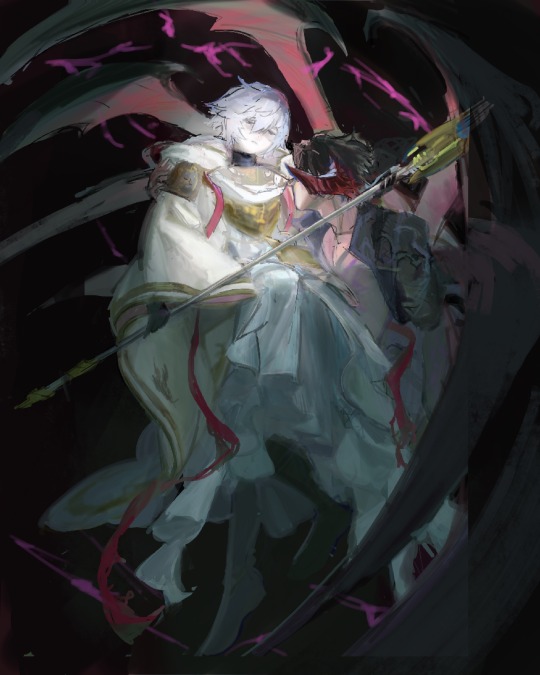
came back just to post these. okay bye
#gbf#belifaa#did you get triple zero (summon)? the sanfaa scissoring summon? SSS? i sierotixed it. It was awesome. Everythung in gbf is going right for#e except for the fact that i had to sieroticket it but its alright. just the notion of so much lucilius is just enough to put me back on my#feet again it’s almsot unreal how much lucilius-centric stuff theyve pushed out the past few months. his GBVSR debut. his summon.#Omg when I saw the gbfes fashion show i was a few seconds behind zen and she told me “You wont believe this” and I was like “WHAT? BELIEVE#WHAT? WHAT? WHAYT DO YOU MEAN” and the official lucilius cosplayer walked out in his robes it felt unreal unreal like it was seeing my onl#dreams come true after years and years of being like Theres no way they’d do that. There’s no way they’d make a cosplay for lucilius in his#robes because hes in his void outfit forever. BUT THEY DID…..AND THERE WAS BLOOD UNDER HIS SKIN….AND HIS LIPS WERE GLOSSED…AND HE HAD A LIT#LE BIT OF TAREME AND TSURIME (TARIME) ACTION ON HIS EYES AND EVERYTIME HE WALKED HIS ROBES KIND OF FLUTTERED AS HE SHUFFLED ALONG I HAD TO#SIT ON THE BATHROOM FLOOR lay down on the bathroom floor and I almpst puked from how nauseous it made me i was OVERJOYED BEYOND MY PHYSICAL#LIMITATIONS OF HAPPINESS . I WAS SO HAPPY. THIS YEAR HAS BEEN UTTERLY MISERABLE FOR ME AND I HAVE NOT BEEN THIS DEPRESSED SINCE HIGH SCHOOL#BUT SEEING LUCILIUS like this genuinely blew me off my socks . I don’t know if i should be 100% thankful because I’ve been trying to figure#out how to balance my emotional state with the media i consume but#I think i really needed it. thank you lucilius for ending my 2023
238 notes
·
View notes
Text
Mystic Messenger is so crazy one day I'm talking to yoosung about his barista club and few days later he's missing an eye lol wtf
371 notes
·
View notes
Text
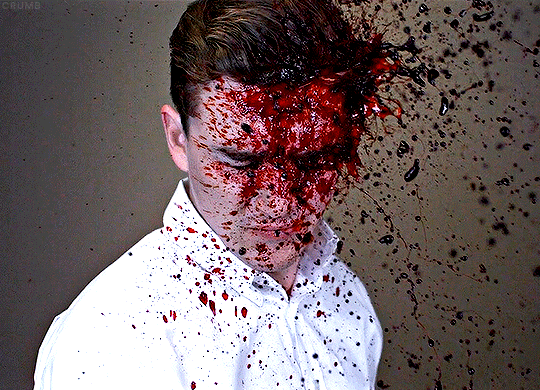
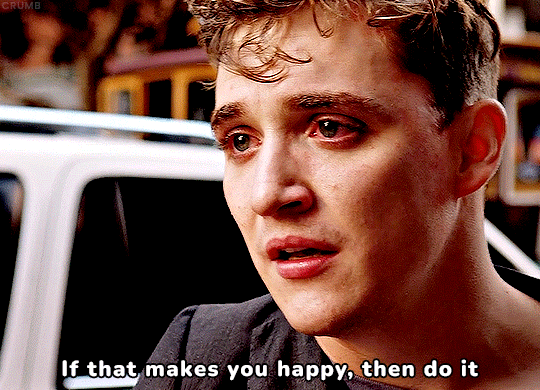
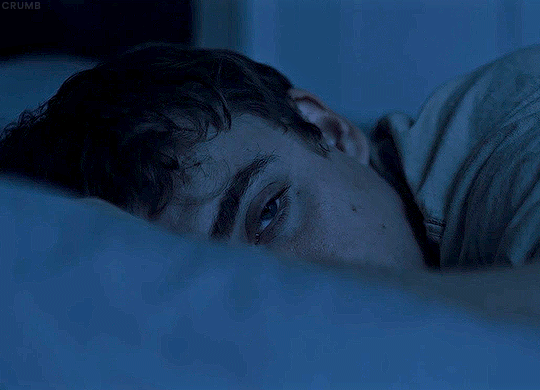

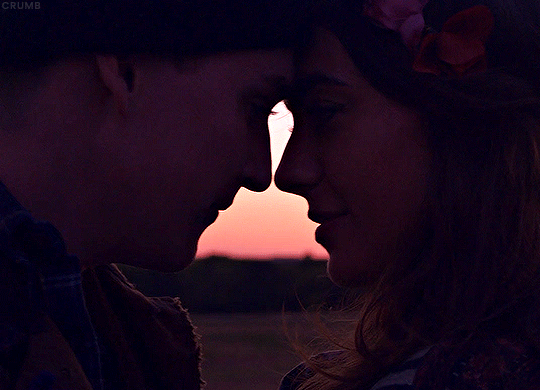
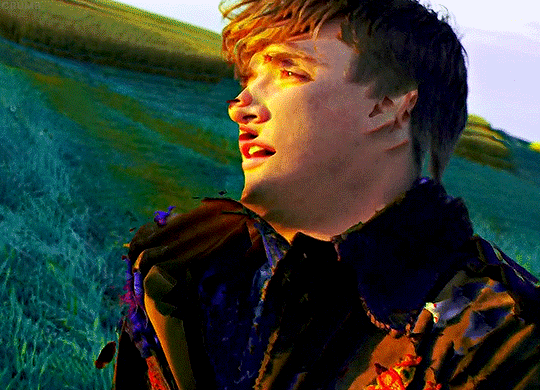
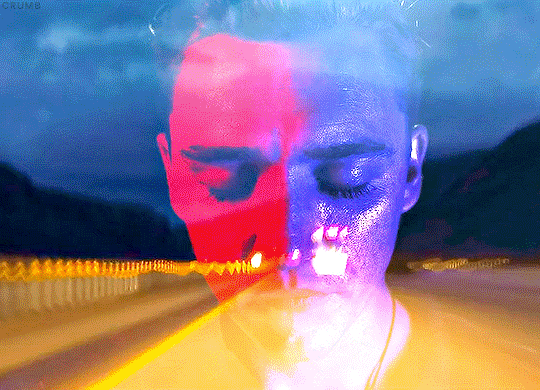
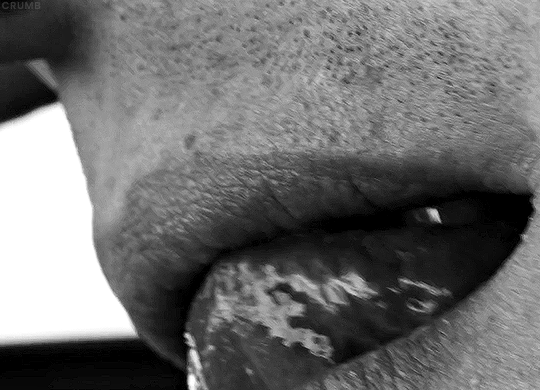


ZEN DOG
2016 | dir. Rick Darge
#the close ups of his eyes and mouth are wild 🥴#kyle gallner#Rick Darge#filmedit#dailyfilmsource#dailyflicks#cinemapix#filmtvdaily#filmtvsource#filmtvcentral#fyeahmovies#userfilm#crumbedit#zen dog#zen dog 2016#zen dog 2018
127 notes
·
View notes
Text
Mystic Messenger Timeline (Explained)
I'll be obviously skipping a lot of stuff in between, but this is just to make things clear. It's not the way you're supposed to play, just the timeline.
⚠️ Contains Spoilers ⚠️
⚠️⚠️ Spoilers ahead ⚠️⚠️
⚠️⚠️ You've been warned ⚠️⚠️
First Rika Behind the Story (DLC)

Then I'll start counting as Year 1, the events that lead to the RFA and Mint Eye foundation.
Year 1:
V and Rika know each other
They meet Saeyoung
Saeyoung leaves
Rika kills the Twins's mom
Rika gets engaged to V
Mika and Rika (Mina) create 1st draft of Mint Eye
V buys the department
*on that note, seems that there are 4 cameras but Saeyoung only knows of one*
**This also implies that Saeran was abused as soon as V and Saeyoung took their eyes off of him since Rika used Saeran as model to defeat Saeyoung's skills as a hacker.
***What happens because neither Saeyoung nor V know anything about Saeran whenever they reunite for RFA parties and their engagement? Why no one asked anything?
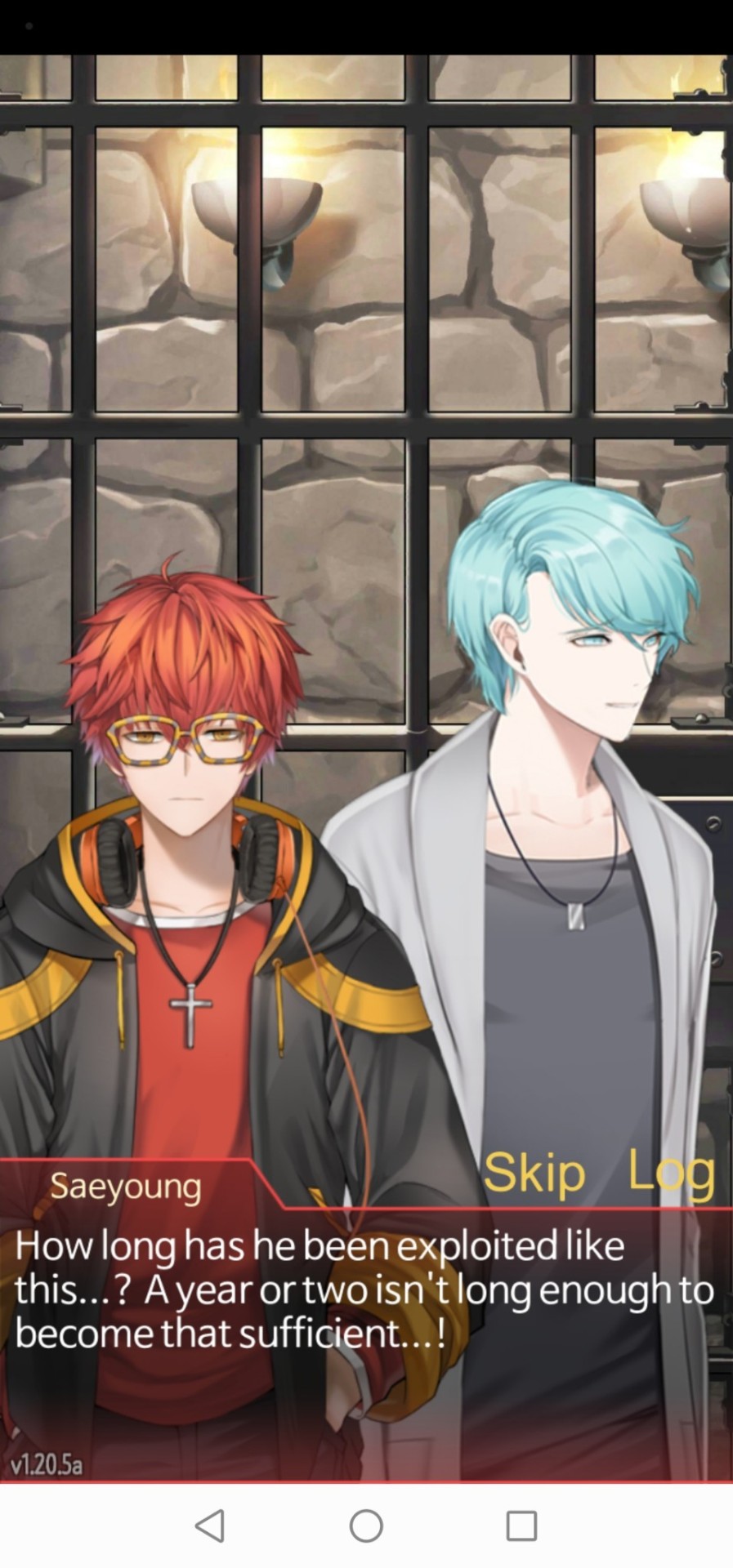
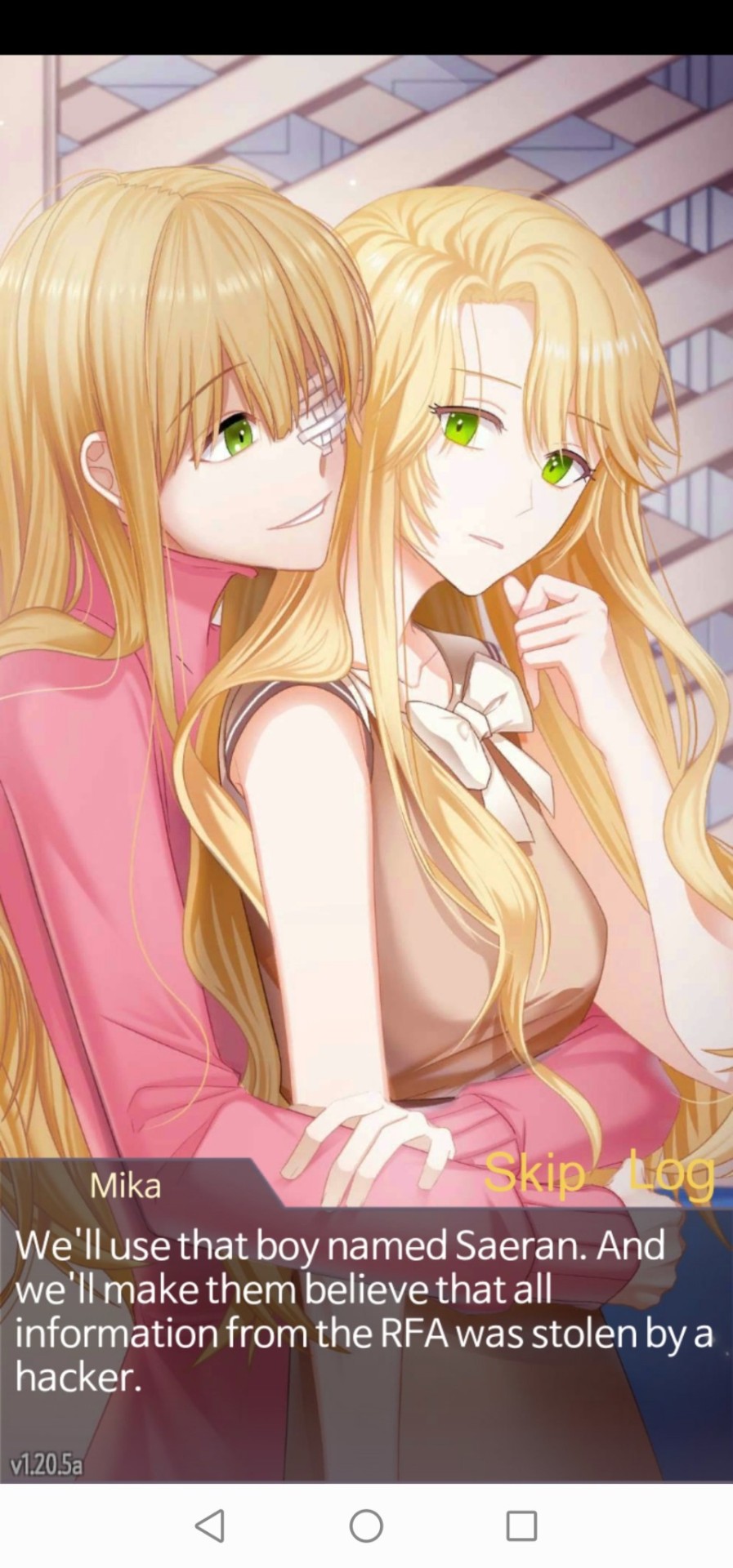

Year 2:
Rika meets Jumin
RFA begins (yes, it was Mint Eye first, and the reason why the name was Magenta first. Mika?)
RFA 1st party is held
Jaehee joins RFA
Rika kills Sally
RFA 2nd party is held
According to V and Saeyoung this is where the hacker starts attacking the RFA (first time)
Rika blinds V
Saeyoung installed the Special System. AKA: The Bomb
Plot holes: Where's Mika? Why they don't notice there's another person living there? It's not that easy to hide your presence 💀
But according to V, he knew about Mika. It's at least implied.
10. According to several chats during Yoosung route, they barely paid attention to V being blinded. This of course included Zen, Yoosung, and Jumin (who is worried and suspects something but doesn't intervene despite V having severe corneal damage from external trauma)
11. There's a point where Jumin admits barely seeing Rika after the 2nd party. Meeting with her and V for the last time 3 months before her death. Yoosung Route. Day 9. Chat room 7AM called V's eyes.
*At the same time, there's a line, I forgot where exactly, that says that both, Rika and V called off their engagement at some point. They don't say anything about coming back together after that. wtf!?*
12. "Rika commits suicide"

Another Story
1 month after her death, prologue.
Five months later
*means 4 months after they break up their engagement? Assuming they did not break up before but because of Rika behavior blinding him. Which kind of solves the plot holes from Year 1 setting Mika on the apartment and V not fully knowing but suspecting, although it would be impossible or almost impossible without his eyes do something about it. Especially since his blindness is recent. If you need to understand a bit more about blindness watch my post on Rika killing Sally. It may be a dog, unlike V lol but it's still enough information to set up the rest of the story.
Anyways, let's go back to our timeline no?
Bad ending prologue #1 (Casual & Deep) and #2 (Another) are part of the same story and unlikely that it is set into an *alternative route* like some people like to say. Bad ending prologues even from Another Story seem to fit almost too perfectly when you think about it, but only if you agree to go with Unknown after rejecting him several times.
Because it would fit into the idea that the MC's were captured by the cult and discarded after a while (or put to work under Mint Eye. But also because according to the opening on the Casual and Deep, it would mean that Saeran's been watching you, so does Saeyoung.)
As I said before, the other MC's are either dead or anything but MIA (whatever that means for Mint Eye?) and this one, the brunette, is selected and it's the only one who survives and passed the whole trial. Not at first but it doesn't matter. This MC is not dead. The others are. You think "The others" are just the player with different image? I've got news for you, each one of this has a number~ check this post ^^
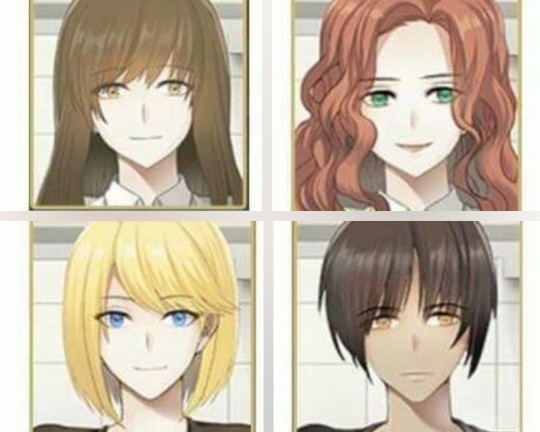
Either you become the assistant of Unknown with that bad ending which is an option available for every prologue or you enter Day 1 to Day 4 of Another Story and play throughout to reach:
Day 6 and Day 10 from Ray/Saeran Route which are part of the same ending. They're not a different ending. Both however lead to the Casual Route, Day 1 (after the prologue)
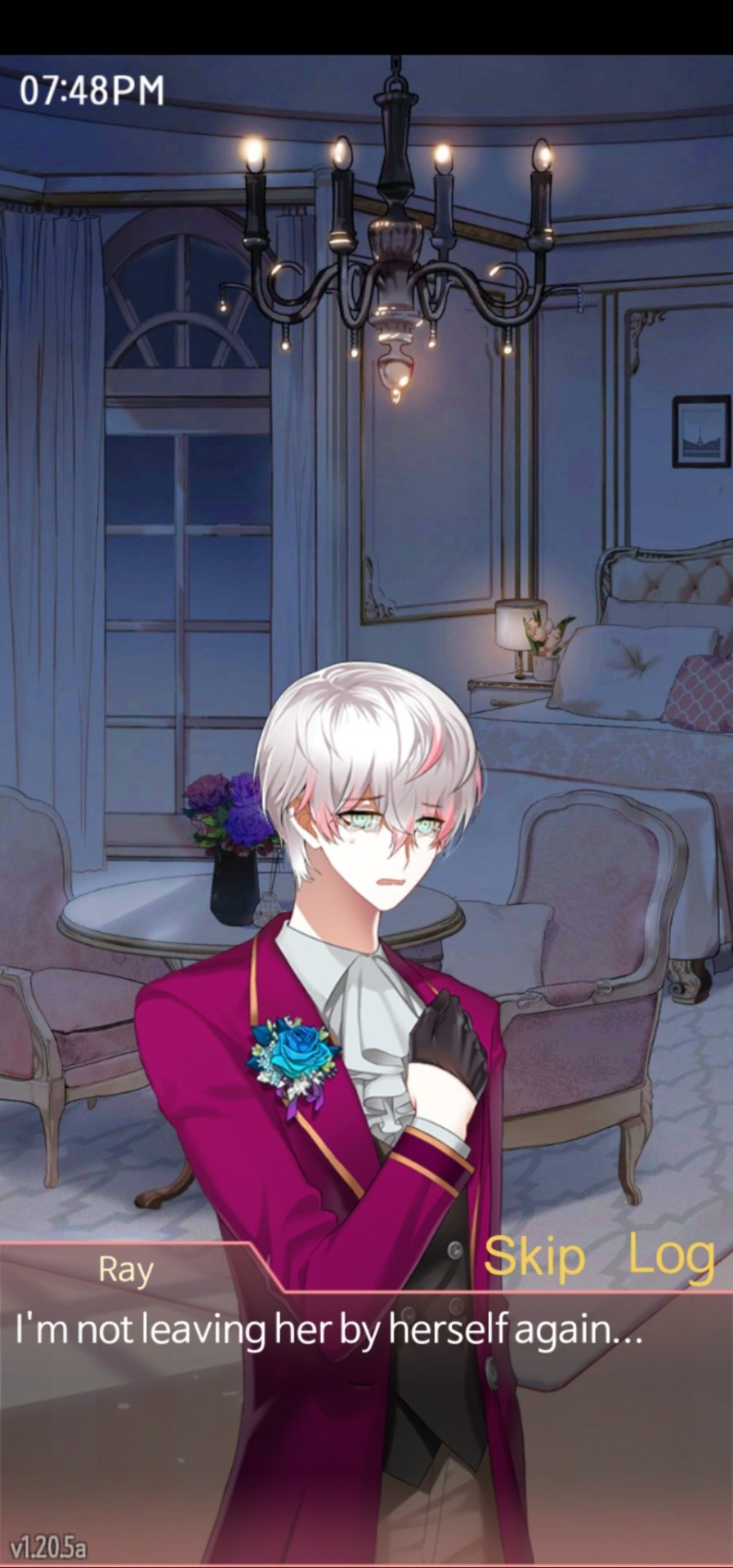
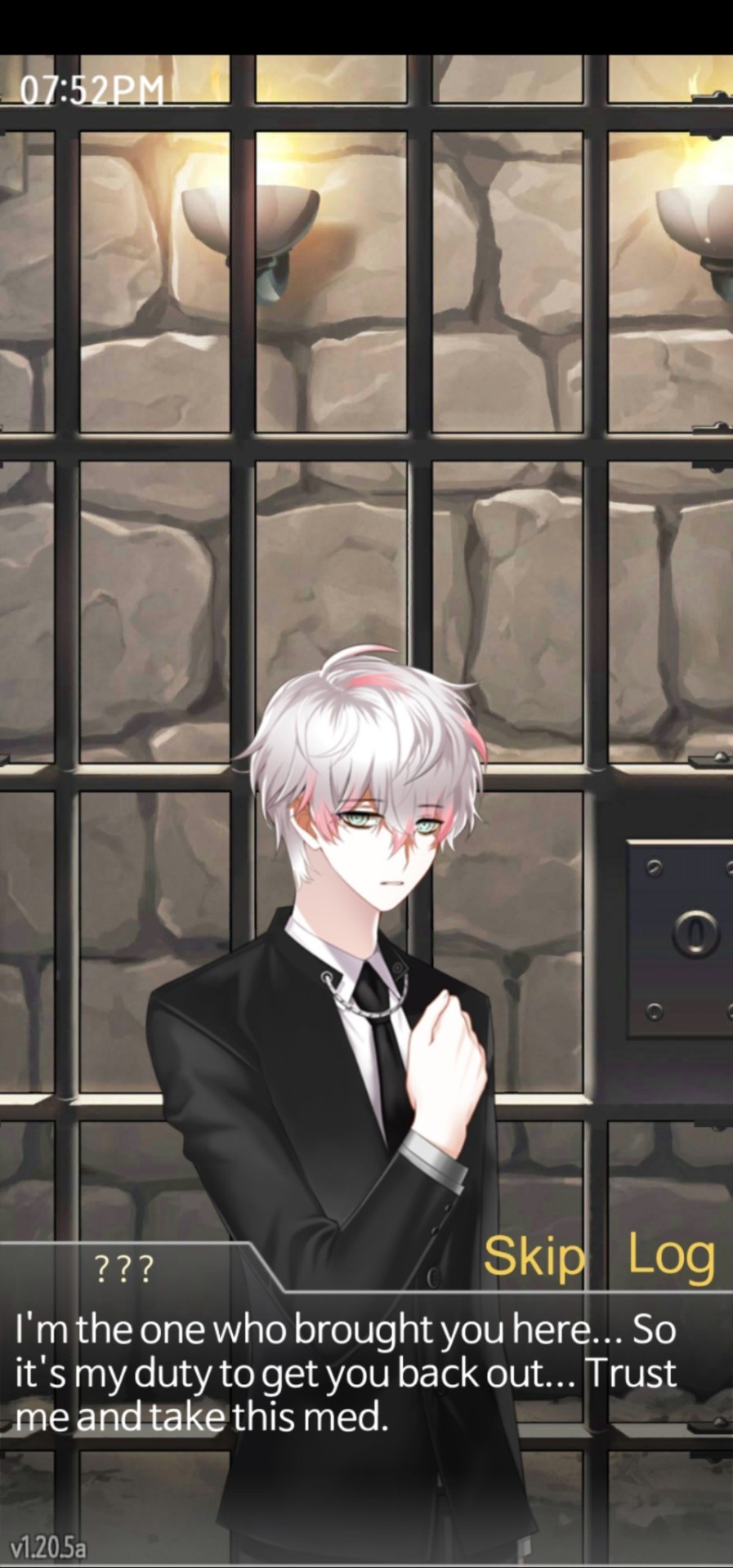
Which means, if you get the bad ending in the prologue of Casual/Deep you'll be going back to Mint Eye. Yes. It's not supposed to be your first rodeo there. And if you have a Bad Ending on Mint Eye, you're brainwashed andd set on Casual/Deep (You're supposed to be an spy, but who do you work for? Are you a victim or a villainess? that's another story 😜)
My theory?
*This is where I'm still stuck, so I'll be fixing major plots here and there and editing this same post over and over until I get it right. Please bear with me 😭*
Rika DLC > 1st party > Rika gets engaged > Saeyoung leaves > Rika kills Sally > Rika kills Saeran's mom > Rika starts torturing Saeran > Mint Eye begins > 2nd party > Hacker attack > Bomb is installed > Rika blinds V > Rika dies > Another Story (prologue) > Another Story (Day 1 to 4) > Another Story (Day 6 & 10, bad relationship both of them) obviously with what causes these bad endings > Casual Route (with bad endings included) > Deep Story (with bad endings included) > Secret Endings (except for V dying, we'll get there) > Another Story again but V route happens first (no happy or normal ending) and then something weird happens:
And this part if I'm being honest, I have no idea but I'm fixing it cause my theory is that
V and Saeran's route become so intertwined that is almost impossible to know what happened.
The bomb on Mint Eye? Saeran? Although it is suggesting in the bad endings that he died, we never saw that to happen.
V dying in the secret endings?
Saeran burn?
Seven does mention a couple of numbers, associated with the other MCs, somewhere in the game. Unfortunately I can't remember if it's on a call or a chat so I'm going back all over again because I was so shocked at the time I was unable to take a screenshot.
Truth to be said I can't fully find the order rn but! I will, I definitely will. I need time. I mean, more time. I've been working on this for 6 to 7 years now, I'm posting this because it's so big I can't keep it to myself and I'm freaking out here. So I'll be editing this in the future. As many of my other posts. Sorry lol
Ironically, Saeran's AE would be indeed the Final Ending.
#Mystic Messenger#mysme theories#mysme spoilers#mysme 707#mysme jumin#mysme seven#mysme zen#mysme saeran#mysme jaehee#mysme#mystic messenger jaehee#mystic messenger saeran#mystic messenger theory#mystic messenger spoilers#mystic messenger zen#mystic messenger#mystic messenger jumin#jumin han#jumin#mc#jaehee kang#v mystic messenger#v mm#rika mystic messenger#mysme rika#rika mm#rika#timeline#Mystic Messenger timeline#mint eye
97 notes
·
View notes
Text
saw fall out boy last night and went TRULY BAT SHIT when patrick started playing yule shoot your eye out
#i literally kept telling zen how it was possible since it was the last show of the year#but they were so unconvinced#when it happened WE WENT FOCKIN CRAZY#love my emo christmas girls (and fall out boy)#fall out boy#yule shoot your eye out#fob
114 notes
·
View notes
Text

#look at them#mystic messenger#mysme v#mysme saeran#mysme ray#mysme rika#mysme mint eye#mysme rfa#mysme 707#mysme jaehee#mysme jumin#mysme zen#mysme yoosung#mysme#hyun ryu#jaehee kang#jihyun kim#jumin han#seayoung choi#luciel choi#saeran choi#yoosung kim
137 notes
·
View notes
Text
Significance of The Heart Sutra in Blue Eye Samurai
The Heart of Prajna Paramita Sutra is a very popular sutra in Buddhism. Even today, millions of people recite and copy this sutra. The text might be short, but it's quite dense. While I don't really understand this sutra myself, I'll try my best to get across the main idea of this text.
"The body is emptiness and emptiness body. All things are only empty. Nothing is born. Nothing broken."
While this line is not exactly what the sutra says, it does a good job of getting the episode's message across, in that Mizu realizes that the things she thought held her back were actually what made her whole.
The Heart Sutra is an exhortation towards Bodhi, Enlightenment, Perfection. Mahayana Buddhists believe that everyone has an innate buddha-nature, which points to our potentiality of becoming buddhas. This buddha-nature is said to be be pure, whole, and complete, yet it is also empty, meaning that it doesn't have a substantiated self or ego. To make this easier to understand, this would be opposed to Christianity where everyone is born with sin and guilt and strives to be morally pure. Because the buddha-nature is empty, the dichotomy of good and bad isn't a "thing", so to say. That doesn't mean that they don't exist or that we shouldn't continue helping others, but instead the idea of them are just notions we attach to and what we use to judge ourselves and others.
The Sixth Patriarch of Zen Buddhism said, "Affliction is Bodhi." They are two sides of the same coin. I think this quote encapsulates Mizu in this episode. Mizu might not find peace through revenge, but she definitely found some semblance of it reforging her sword.
When making swords, Eiji emphasized that while you have to hammer out the impurities, the impurities are actually what makes the blade strong. If the metal is too pure, it will become brittle and break. However, just because it broke, doesn't mean it can't be meld again. "Affliction is Bodhi" points to the ability to transform what causes pain into clarity and peace. A common analogy used is ice turning into water. Mizu held tightly to anger and hate, making her cold and distant. But with the help of Eiji and Ringo, she stopped running away from the things she hated about herself.
Finding peace requires courage and vulnerability. It requires us to confront the things that we are ashamed of and the things that we fear. After her talk with Eiji, Mizu starts a new fire, undoes her hair, and sheds her male attire. Throughout her whole life, Mizu felt inadequate and broken for being mixed and being born a girl. Now she sees things as they are, no longer rejecting that side of herself. She becomes more open, and even asks Ringo to help her finish writing the Heart Sutra on her body.
"There are some things I cannot do alone."
"The body is emptiness and emptiness body. All things are only empty. Nothing is born. Nothing broken."
Going back to this line, I need you to repeat after me: Emptiness is not the void! Emptiness holds all things, and all things are within emptiness, and therefore is the source of it all. It speaks to the interconnectedness of all things. Emptiness has always been there, whole and complete. Mizu realizes that she is whole and complete, because she is not alone. And so, nothing is born, nothing dies, nothing is broken.
#blue eye samurai#bes#mizu#heart sutra#eiji#ringo#i hope that made sense#wrote this as soon as i finished watching#if you are confused about anything pls ask#this is based off my knowledge of Chan Buddhism#which is the chinese predecessor of Zen
101 notes
·
View notes
Text
Man I’ve been sleeping A LOT lately. Time to fix that.
*opens mystic messenger*
CHERITZ
#mystic messenger#Saeran here I come#saeran choi#707#zen#jaehee#jumin#time to ruin my sleep#mint eye#magenta#did you eat today???
40 notes
·
View notes
Text
zen as mint eye believer + my headcanons !

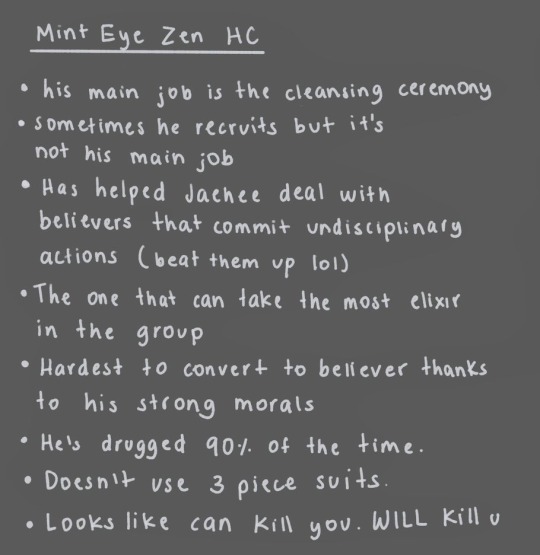
i was between recruiter and cleansing leader for him bc i feel like he’s naturally a charming type of person. his good looks will help as much as his acting skills, he would make ppl join the cult in a blink of an eye, recruiter fits him perfectly BUT looking at his character in general (present) i find impossible that he would do something as bad as manipulating/kidnapping ppl to make them join the cult in a sober state. i think he would need a deep cleansing ritual to even make hyun behave.
i based this on what saeran said on his BE3 (in case u don’t know about this saeran is referring himself as the “angel” 💀 and he had to drug zen a lot for him to obey him, and he still wasn’t completely tamed in this ending)
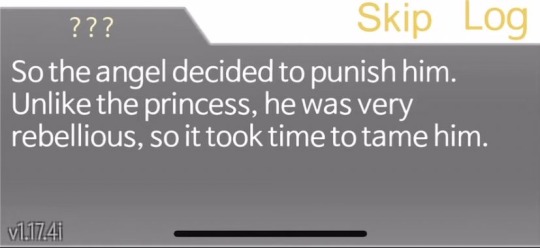
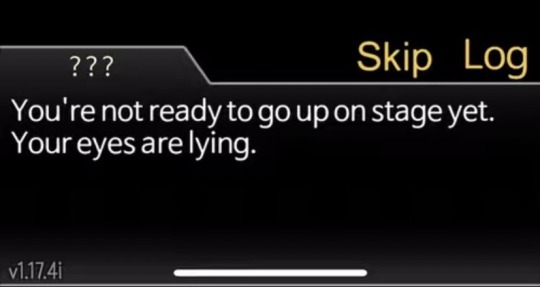
that’s why he wouldn’t be suitable for a role that requires him going outside a lot, he would def find a way to escape or snitch. so i think the cleansing on him would be directed into one of his flaws: his bad temper. it’ll be as harsh as saeran’s cleansing.
but in zen’s case they won’t need to create a “persona” because he already has an attitude. i remember Sev saying that he’s a scary person when angry. his cleansing ceremony would expand that. a strong personality is perfect for cleansing leader!!
i’m setting hyun free by assigning a role that doesn’t require him to look good, charming and perfect
also im sure he has tried to kill jumin but his loyalty for mint eye has stop him lol or someone else stops him anyways end of my long ass rant <3
#mystic messenger#mystic messenger fanart#mystic messenger zen#zen mystic messenger#mc x zen#mysme zen#hyun ryu#mars art#mint eye au#mint eye
238 notes
·
View notes
Text

More Dani Torrent Yoozens!
The studying is going very well this evening. Yoosung's mind is sharp and receptive. He's stretched comfortably on the couch, thin worn library paperback in hand, and devours page after page, muttering to himself unintelligibly as he goes through self-checks after chapters.
Yes, studying is going well this evening.
When something pokes his leg, he just rubs the spot with his other foot, still focused on the text. Then, the couch caves, and Yoosung feels a familiar weight settle over him. Zen covers Yoosung's body with his own, slides his head under his hands holding the book, rests on Yoosung's shoulder.
'Hey.'
The muffled phrase warms Yoosung's arm.
'Hey,' he responds, habitually. A smile creeps to his lips.
Zen is heavy, warm. He smells fresh, of shower gel and clean skin: he's just washed after his evening workout. Yoosung takes a deep, slow breath. He loves Zen's weight over him like this, but he knows it's bound to get painful very soon. And he also knows that Zen is aware of that, and that he will not let it happen.
'Tired?'
'Mhm.' Zen nods, nuzzling into his arm. 'Whatcha reading?'
'Occupational safety and health. Retaking for the previous year.'
'They don't have a digital textbook?'
'Paper's easier on the eye.'
Zen hums a little noise of understanding. His lower body slides off to the side of the couch, making it instantly easier to breathe.
'Mind if I stay here?'
'No, but I'm gonna be reading. Got the exam soon. Okay?'
'I'm not gonna bother. Just gonna listen to your heart for a bit.'
Yoosung smiles.
'Mhm.'
Zen shifts a little, making himself more comfortable on Yoosung's chest.
'I'm not choking you?'
'Nah.'
'Doesn't hurt?'
'Nah.'
Zen nods into him, satisfied. Yoosung settles the book on his back. Perfectly on eye level. Nice.
'Comfy?' Zen asks. A smile sounds in his voice.
'Mhm.'
'Tell me if you start getting uncomfy like this.'
Yoosung smiles a little to himself. It's quickly getting dark outside, but the light is on in the living room. He's stretched comfortably on the couch. Zen is huddled beside him and on him, legs hanging awkwardly far beyond the armrest. He's a little heavy on his ribcage, but he's made sure to not press the belly and to let Yoosung breathe. Long fingers softly caress his elbow before resting along his side. He might be a little sad, maybe that's why he's seeking comfort on Yoosung's chest. It's still difficult for him to ask for help, but he's getting there. Or might be he's just overcome with tenderness — if Yoosung wasn't busy, he would kiss him silly. Maybe he will, as soon as Yoosung puts down the book. But there doesn't seem to be anything urgent, judging by how easily Zen has settled, how even his breathing is, warming Yoosung's arm, how comfortable he looks, so relaxed.
Yoosung turns his head just slightly and presses a gentle kiss into pale hair. Then gets back to reading.
#my friend told me Zen's listening to Yoosung's heart because he's worried and i just had to add it because im softe#it's funny though that Yoosung is reading but the eye turned to the viewer is the blind one#hehe#yoozen#zensung#kim yoosung#yoosung kim#hyun ryu#ryu hyun#mystic messenger zen#mystic messenger#mysmes
37 notes
·
View notes
Text

#wallpaper#zen#777#444#spilled ink#namaste#life quotes#quote#quotes#law of abundance#law of attraction#loa#spirituality#third eye#good vibes#vibes#inspiration#inspo#positivity#pinterest#awareness#aesthetic#energy
23 notes
·
View notes
Text

52 notes
·
View notes
Text
/WARNING/
Drawn blood; injuries; eye contact; multiple eyes (not too graphic, but please be safe! <3 As always, extra notes are in the tags ;))





"This is the only place where I can be with you the closest and this is what you do?"
#INFODUMP TIME#OKAY#So O'Neil's Out-Of-Bounds form right#I mentioned he is only ever comfortable shifting into inside the Zen Room#And by extension#He is the Zen Room itself#At least- the void in the zen room#The lights arent actually just light#Those are his EYES#And the zen room is the closest he can physically be with elias (stanley)#And he would find comfort in that IF elias wasnt such a douche and didnt limp out towards the platform#after jumping a few times off the stairs just to screw with the narrator and show off how bloodied and injured he was#Just to spite (see previous comic featuring stanley for some more context!)#In the zen room#If O'Neil manifests into his Out-Of-Bounds form#The room will lose its light because all of it will gather to form his eyes#And the rest of his smoky/gooey body kind of blends in with the rest of the room#With the ocassional residue of light appearing and outlining his silhouette#I think thats all#Ill add onto here or my next post if i remember some extra things ^^#Take care! <3#Alibi!#the stanley parable#tsp#tspud#tsp au#tspud au#tspud stanley#tsp stanley#tsp narrator
144 notes
·
View notes
Text
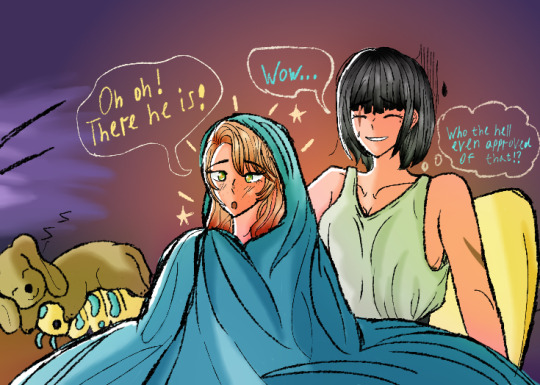
They are watching The Jalapeno Topping Was Pretty Spicy (Chaewon is not impressed)
#mystic messenger#mysmes#mysme#mm#rika kim#kim rika#mystic messenger rika#rika x cmc#rika x oc#oc chaewon lee#rika x chaewon#PLEASE IGNORE THE BACKWARDS 'Z' I HAVE NO IDEA WHY I WROTE IT LIKE THAT AND FRANKLY I AM VERY EMBARRASSED ABOUT IT#also was too lazy to do the lineart and pretty rendering so colored sketch it is#chaewon does not understand musicals and zen has no effect on her#especially the jalapeno topping#but hey rika enjoys it#she may as well sit through it#also isopod plush cameo bc it is now canon#sally adores it#and hey this is the first art of pre mint eye chaewon#neat
21 notes
·
View notes
Text
Mixed! Messenger AU
I came up with a Mystic Messenger AU!
I have no idea if this already exists lol
It's sort of a role-swap for the characters, but based on mixing the duos/trios, mostly (but not completely) based on story grouping.
Here's the list of who is swapped with who:
MC swapped with Rika
Jumin swapped with Seven
V swapped with Saeran
Yoosung swapped with Zen
Jaehee swapped with Vanderwood
It's still an AU-in-progress, so it still needs some things fleshed-out, but here's some random things I thought about for each character:
Yoosung:
- a new, young voice actor
- still very cute
- has voiced characters in (usually indie) videogames primarily
- wants to work on bigger games, but spends too much time gaming when he should be applying for bigger voice acting positions
Zen:
- college student who changed his major several times and failed a bunch of classes, but still doing his best
- still a narcissist
- working several jobs to pay for his tuition because he refuses to accept financial help, wanting to earn it on his own
- loves musicals!! (he'll one day realize his dream to be a musical actor, but he has yet to realize...)
Vanderwood:
- works for CEO-in-line, Saeyoung Choi, as his assistant (and maid)
- constantly reminds Seven to take his job seriously
- is very confused why Seven has so much money yet doesn't take care of his health (Seven still primarily eats honey buddha chips)
- annoyed when Saeyoung calls them his housemaid when clearly they're his assistant
Jaehee:
- secret agent (and catsitter for Jumin)
- overworked by the agency AND Jumin and needs a break
- cat hair everywhere, send help
- has to beg Jumin not to involve cats into his or their missions
- still loves musicals! (not a fan of Zen as an actor tho since he's not an actor yet)
- once sat next to Zen during a theatre showing, but never kept in contact (was in awe from his beauty, but knew she needed to keep her distance due to agency work)
Jumin:
- hacker and secret agent
- still has Elizabeth the 3rd, and claims that her wisdom has helped him crack many codes and solved many missions
- great at his job otherwise
- still has the same personality as before, except hacker
Seven:
- CEO-in-line who works hard but also loves mischief!
- definitely has produced some hilarious marketing campaigns
- may or may not have made some secret loophole scams to snatch more money for his babies (his cars)
- still wants to play with Elly
- can actually afford to go to the moon
V:
- used to be best friends with Jumin before joining Gold Eye under MC
- loves art, but doesn't have enough time to make any due to hacking and cult shenanigans
- instead of a garden, Gold Eye has an art gallery where V likes to spend his time
- will do anything for MC, even learning to hack and worshipping her every move
Saeran:
- leader of MC's Fundraising Association (MCFA)
- specializes in floral photography and gardening
- lives with his brother in a penthouse
- has a large garden in their backyard with all sorts of flowers and plants
- he and Saeyoung still grew up with that abusive mother, but, eventually they learned their dad (who isn't the prime minister in this) was rich, so they escaped, found him, and convinced him to let them live with him
- loves MC and has been desperate to find her after she vanished
Rika:
- no, she is not getting the option to date like in the game; she's just there trying to fix everything and make everyone happy
- never hosted a party in her life, but is determined to try
- never dated V
- struggles with mental illness and trauma, but is actively seeking therapy and is improving
- joined MCFA after MC left (Yoosung recognized her immediately, but everyone else does not know her)
MC:
- cult leader of Gold Eye
- obsessed with bringing MCFA into her cult as her harem
- looooooves bad endings
- didn't fake her own death, but did mysteriously cut contact one day and took V with her
- the true mastermind in all this
EVERYTHING IN THIS LIST IS SUBJECT TO CHANGE!! I just thought this would be a fun AU concept idea lol
I made this while sleep deprived lol
I'm gonna go to sleep now
#mystic messenger au#mystic messenger#yoosung mysme#mysme au#mysme#mysme 707#jaehee kang#jumin han#mysme mc#vanderwood#mysme zen#mysme v#saeran choi#mint eye
23 notes
·
View notes